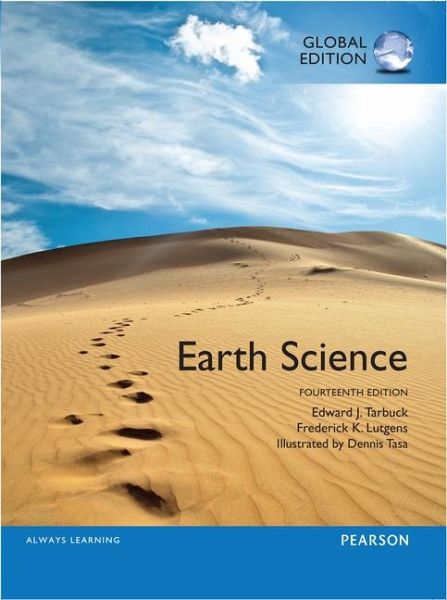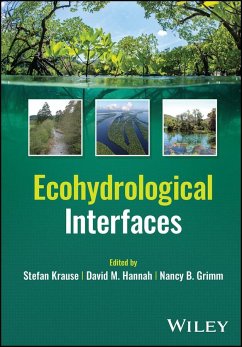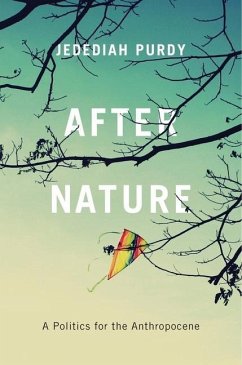
Earth Science, Global Edition
Versandkostenfrei!
Versandfertig in 2-4 Wochen
129,99 €
inkl. MwSt.

PAYBACK Punkte
65 °P sammeln!
For Introductory Earth Science Courses
Ideal for undergraduates with little or no science background, Earth Science provides a student-friendly overview of our physical environment that offers balanced, up-to-date coverage of geology, oceanography, astronomy, and meteorology. The authors’ texts have always been recognized for their readability, currency, dynamic art program, delivery of basic principles and instructor flexibility.
This program will provide an interactive and engaging learning experience for your students. Here’s how:
Teach with an active learning path: Chapters have been broken up into small manageable sections that help students actively analyze information, assess their progress and think about Earth science.
Use art that teaches. Each chapter contains 5-7 SmartFigures. SmartFigures are illustrations that use Quick Response (QR) codes to link students to lecture-style videos. Also found in each chapter and accessed by QR codes are Mobile Field Trips, where students virtually accompany Michael Collier on adventures to explore different landscapes.
Cultivate an active learning environment that helps students achieve a deeper understanding of the text.
Features + Benefits
Teach with an active learning path
NEW! Expanded active learning path that consists of four main parts: Focus on Concepts, Concept Checks, Give It Some Thought and Examining Earth Systems. By breaking up chapters into smaller modules, the text changes the way that students learn and retain information. Rather than passively read through long passages of exposition, they can absorb manageable bits of information, assess their knowledge of it, and go back and review the material if needed.
NEW! Concepts in review areend-of-chapter features that coordinate with Focus on Concepts, beginning chapter features. This feature provides a concise overview of key ideas by using photos, diagrams and questions that test students’ understanding of core concepts.
Focus on Concepts is anumbered learning objective feature that corresponds to each major section of the chapter and identifies the knowledge and skills that students should master by the end of the chapter. This feature helps students prioritize key concepts.
Concepts Checks: Within each chapter, every major section concludes with “Concept Checks” that allow students to monitor their understanding and comprehension of significant facts and ideas.
Give It Some Thought (GIST) These questions and problems are found at the end of each chapter and challenge learners by involving them in activities that require higher order thinking skills that include the synthesis, analysis, and application of material in the chapter.
Examining Earth Systems are chapter-concluding sections that present problems and questionsintended to develop awareness and appreciation for some of the Earth systems’ many interrelationships.
Use art that teaches
NEW! Illustrations: Dennis Tasa, a gifted artist and respected geoscience illustrator, continues adding outstanding illustrations in this edition. Truly an extension of the written story of Earth science, Tasa’s illustrations now show greater color and shading contrasts, more “narration,” and additional photo comparisons to guide students more clearly than ever before.
Eye on Earth chapter sections provide aerial or satellite views that challenge students to apply their understanding of basic facts and principles. A brief explanation of each image is followed by critical thinking questions.
Cultivate an active learning environment
NEW! Up-to-date content, data, and information have been added to this edition to give students the most relevant current information about Earth Science.
NEW! Mobile Field Trips are video field trips that are scattered throughout the text. By scanning the QR code, you are able to virtually accompany Michael Collier on an extraordinary adventure to explore different landscapes.
NEW! GEOgraphics are striking visual magazine-style “geo-essays” that explore topics that promote a greater understanding and add interest to each story.
Table of Contents
1: Introduction to Earth Science
Unit 1 Earth Minerals
2: Matter and Minerals
3: Rocks: Materials of the Solid Earth
Unit 2 Sculpturing Earth’s Surface
4: Weathering, Soil, and Mass Wasting
5: Running Water and Ground Water
6: Glaciers, Deserts, and Wind
Unit 3 Forces Within
7: Plate Tectonics: A Scientific Revolution Unfolds
8: Earthquakes and Earth’s Interior
9: Volcanoes and Other Igneous Activity
10: Crustal Deformation and Mountain Building
Unit 4 Deciphering Earth’s History
11: Geologic Time
12: Earth’s Evolution Through Geologic Time
Unit 5 The Global Ocean
13: The Ocean Floor
14: Ocean Water and Ocean Life
15: The Dynamic Ocean
Unit 6 Earth’s Dynamic Atmosphere
16: The Atmosphere: Composition, Structure, and Temperature
17: Moisture, Clouds, and Precipitation
18: Air Pressure and Wind
19: Weather Patterns and Severe Storms
20: World Climates and Global Climate Change
Unit 7 Earth’s Place in the Universe
21: Origins of Modern Astronomy
22: Touring Our Solar System
23: Light, Astronomical Observations, and The Sun
24: Beyond Our Solar System:
Ideal for undergraduates with little or no science background, Earth Science provides a student-friendly overview of our physical environment that offers balanced, up-to-date coverage of geology, oceanography, astronomy, and meteorology. The authors’ texts have always been recognized for their readability, currency, dynamic art program, delivery of basic principles and instructor flexibility.
This program will provide an interactive and engaging learning experience for your students. Here’s how:
Teach with an active learning path: Chapters have been broken up into small manageable sections that help students actively analyze information, assess their progress and think about Earth science.
Use art that teaches. Each chapter contains 5-7 SmartFigures. SmartFigures are illustrations that use Quick Response (QR) codes to link students to lecture-style videos. Also found in each chapter and accessed by QR codes are Mobile Field Trips, where students virtually accompany Michael Collier on adventures to explore different landscapes.
Cultivate an active learning environment that helps students achieve a deeper understanding of the text.
Features + Benefits
Teach with an active learning path
NEW! Expanded active learning path that consists of four main parts: Focus on Concepts, Concept Checks, Give It Some Thought and Examining Earth Systems. By breaking up chapters into smaller modules, the text changes the way that students learn and retain information. Rather than passively read through long passages of exposition, they can absorb manageable bits of information, assess their knowledge of it, and go back and review the material if needed.
NEW! Concepts in review areend-of-chapter features that coordinate with Focus on Concepts, beginning chapter features. This feature provides a concise overview of key ideas by using photos, diagrams and questions that test students’ understanding of core concepts.
Focus on Concepts is anumbered learning objective feature that corresponds to each major section of the chapter and identifies the knowledge and skills that students should master by the end of the chapter. This feature helps students prioritize key concepts.
Concepts Checks: Within each chapter, every major section concludes with “Concept Checks” that allow students to monitor their understanding and comprehension of significant facts and ideas.
Give It Some Thought (GIST) These questions and problems are found at the end of each chapter and challenge learners by involving them in activities that require higher order thinking skills that include the synthesis, analysis, and application of material in the chapter.
Examining Earth Systems are chapter-concluding sections that present problems and questionsintended to develop awareness and appreciation for some of the Earth systems’ many interrelationships.
Use art that teaches
NEW! Illustrations: Dennis Tasa, a gifted artist and respected geoscience illustrator, continues adding outstanding illustrations in this edition. Truly an extension of the written story of Earth science, Tasa’s illustrations now show greater color and shading contrasts, more “narration,” and additional photo comparisons to guide students more clearly than ever before.
Eye on Earth chapter sections provide aerial or satellite views that challenge students to apply their understanding of basic facts and principles. A brief explanation of each image is followed by critical thinking questions.
Cultivate an active learning environment
NEW! Up-to-date content, data, and information have been added to this edition to give students the most relevant current information about Earth Science.
NEW! Mobile Field Trips are video field trips that are scattered throughout the text. By scanning the QR code, you are able to virtually accompany Michael Collier on an extraordinary adventure to explore different landscapes.
NEW! GEOgraphics are striking visual magazine-style “geo-essays” that explore topics that promote a greater understanding and add interest to each story.
Table of Contents
1: Introduction to Earth Science
Unit 1 Earth Minerals
2: Matter and Minerals
3: Rocks: Materials of the Solid Earth
Unit 2 Sculpturing Earth’s Surface
4: Weathering, Soil, and Mass Wasting
5: Running Water and Ground Water
6: Glaciers, Deserts, and Wind
Unit 3 Forces Within
7: Plate Tectonics: A Scientific Revolution Unfolds
8: Earthquakes and Earth’s Interior
9: Volcanoes and Other Igneous Activity
10: Crustal Deformation and Mountain Building
Unit 4 Deciphering Earth’s History
11: Geologic Time
12: Earth’s Evolution Through Geologic Time
Unit 5 The Global Ocean
13: The Ocean Floor
14: Ocean Water and Ocean Life
15: The Dynamic Ocean
Unit 6 Earth’s Dynamic Atmosphere
16: The Atmosphere: Composition, Structure, and Temperature
17: Moisture, Clouds, and Precipitation
18: Air Pressure and Wind
19: Weather Patterns and Severe Storms
20: World Climates and Global Climate Change
Unit 7 Earth’s Place in the Universe
21: Origins of Modern Astronomy
22: Touring Our Solar System
23: Light, Astronomical Observations, and The Sun
24: Beyond Our Solar System:
For Introductory Earth Science Courses
Ideal for undergraduates with little or no science background, Earth Science provides a student-friendly overview of our physical environment that offers balanced, up-to-date coverage of geology, oceanography, astronomy, and meteorology. The authors' texts have always been recognized for their readability, currency, dynamic art program, delivery of basic principles and instructor flexibility.
This program will provide an interactive and engaging learning experience for your students. Here's how:
Teach with an active learning path: Chapters have been broken up into small manageable sections that help students actively analyze information, assess their progress and think about Earth science. Use art that teaches. Each chapter contains 5-7 SmartFigures. SmartFigures are illustrations that use Quick Response (QR) codes to link students to lecture-style videos. Also found in each chapter and accessed by QR codes are Mobile Field Trips, where students virtually accompany Michael Collier on adventures to explore different landscapes. Cultivate an active learning environment that helps students achieve a deeper understanding of the text.
Ideal for undergraduates with little or no science background, Earth Science provides a student-friendly overview of our physical environment that offers balanced, up-to-date coverage of geology, oceanography, astronomy, and meteorology. The authors' texts have always been recognized for their readability, currency, dynamic art program, delivery of basic principles and instructor flexibility.
This program will provide an interactive and engaging learning experience for your students. Here's how:
Teach with an active learning path: Chapters have been broken up into small manageable sections that help students actively analyze information, assess their progress and think about Earth science. Use art that teaches. Each chapter contains 5-7 SmartFigures. SmartFigures are illustrations that use Quick Response (QR) codes to link students to lecture-style videos. Also found in each chapter and accessed by QR codes are Mobile Field Trips, where students virtually accompany Michael Collier on adventures to explore different landscapes. Cultivate an active learning environment that helps students achieve a deeper understanding of the text.












